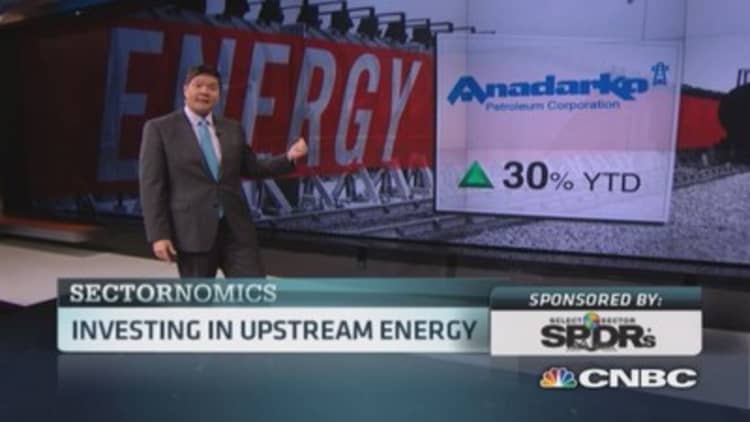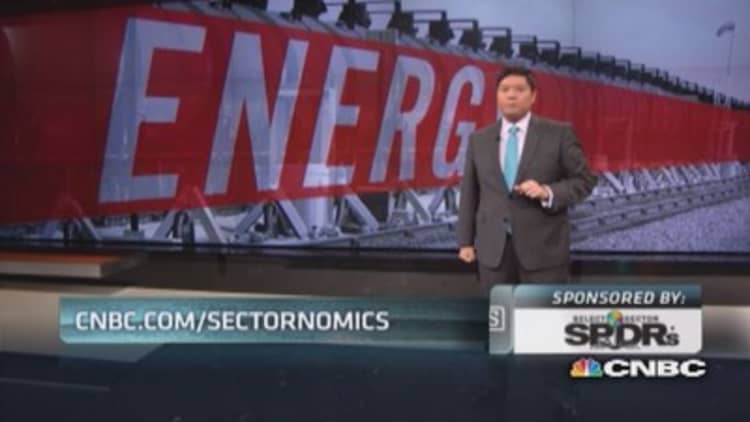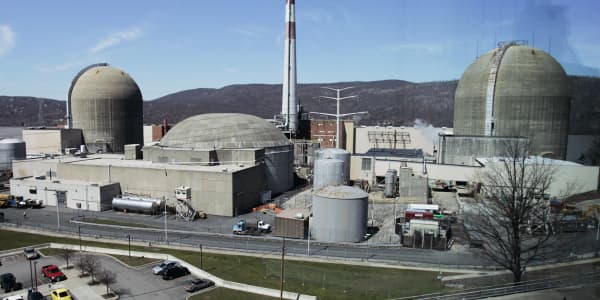In May, Stanford University became the first major university to throw its support behind a growing movement to divest endowments and pension funds from fossil fuel producers perceived to be major contributors to pollution and global warming, announcing that it would purge its $18.7 billion endowment of stocks in coal mining companies.
Trumpeted as a victory by student groups participating in a larger divestment movement at roughly 300 universities nationwide, the move to purge coal stocks from its portfolio scored Stanford's administration some socially responsible investing bona fides.
It also raised a fundamental question for any investor: Is it a good time to give up on coal stocks, since almost everything but coal has taken part in the extended bull market run? Or is the coal sector one of the only areas of the market left to buy at a decent discount?
In recent years, U.S. coal producer stocks were on a steady slide, with the Dow Jones U.S. Coal Index slipping from a high of nearly 500 in April 2011 to just below 150 today (it's been stuck below 150 since early last year). There have been signs of life—the index is up 30 percent in the past year, but nothing to get too excited about. Big coal stocks have been trending down again in 2014, with the index slipping by 3 percent. Beleaguered by what one analyst calls "a litany of negatives" in the marketplace, in the news, and in the regulatory environment, U.S. coal stocks by and large haven't been winning investments.
"You're dealing with an administration that's been more hostile to coal than any in history," said Mark Levin, managing director at BB&T Capital Markets. "You're dealing with a [natural gas] shale boom that's completely been a game-changer. You're dealing with a Chinese economy that's slowed over the last several years. And most of these companies are already in tough situations because of all the debt that they have, making things all the more challenging."
I don’t think we’ve hit rock bottom. Things will get worse before they get better.Mark Levinmanaging director at BB&T Capital Markets
Though popular narrative might suggest that coal's biggest problem is its reputation for being "dirty energy," the coal sector's recent woes are borne of something more fundamental that predates President Obama's so-called—at least by his detractors—"war on coal."
Among the many headwinds slowing the U.S. coal industry over the past several years, the most difficult to rebound from was self-inflicted, Levin said. The coal market last peaked just prior to the 2008 financial crisis (the Dow Jones U.S. Coal Index broke 700 in mid-2008), driven in large part by demand for metallurgical coal—coal used in the production of metals, primarily steel. U.S. companies that historically produced coal for energy generation began looking for metallurgical coal companies to acquire, hoping to grab a piece of the white-hot construction booms in China and elsewhere in the developing world.
Read MoreEnergy stock boomers that aren't going bust
But those buyers bought at the top of the market, taking on massive debt to finance the deals. In 2011, Peabody Energy, the world's largest private-sector coal company, bought Australia's Macarthur Coal for $5.1 billion. In the same year, Alpha Natural Resources—America's third-largest coal supplier—bought Massey Energy for $7.1 billion. Arch Coal bought International Coal Group for roughly $3.4 billion, creating the nation's fourth-largest metallurgical coal producer.
"They were actually trying to diversify away from the things that you think about when you think of energy," said Lucas Pipes, clean and coal tech analyst for Brean Capital. "They did diversify, and unfortunately most of these acquisitions went sour very quickly."



The story of how they went sour is familiar: Development in China and elsewhere slowed, weighed down by sluggish financial markets; the shale boom made cleaner and readily available natural gas a more attractive energy option; and the public perception of coal as the dirtiest fossil fuel option endowed the industry with a tarnished public image, one that hasn't helped it politically or in terms of public relations.
The more serious underlying problem might not be so apparent: As demand slowed, supplies stacked up. Metallurgical coal prices per ton are now less than half what they were at the time coal companies were piling into debt-financed deals a few years ago.
Read MoreCarbon crackdown a small threat to these stocks
"There's no quick fix to the oversupply situation in the metallurgical coal markets," Pipes said. "Unfortunately, as long as met coal is stuck in this low price environment, even if the domestic market were to change, with natural gas prices rising or regulations changing, it probably would not be quite enough."
That doesn't bode well for U.S. coal producers in the short term or even the relatively long term. Piling atop these fundamental market woes are new EPA regulations proposed by the Obama administration that would require energy producers to cut carbon emissions by 30 percent from 2005 levels by 2030—regulations that could push more utilities away from coal and toward cleaner-burning options like natural gas, which also happens to remain relatively inexpensive and in abundant supply.
Looking forward over the next year, there's little reason to believe the marketplace—or the fortunes of U.S. coal stocks—will improve. "I don't think we've hit rock bottom," Levin said. "Things will get worse before they get better."
A fundamental case still in place
But that doesn't mean there isn't value to be found in the coal space.
Stocks like Hallador Energy and Westmoreland Coal have either held the line or, in Westmoreland's case, actually gained momentum since 2011 for one simple reason: They didn't participate in the M&A madness that buried many of their peers in debt. "There will be a turnaround," Pipes said. "But you want to be sure you look for a company that has a balance sheet that's going to last through that point in time when the turnaround occurs."
Read MoreWhy utility bills won't be getting much cheaper
For the coal companies that survive, the turnaround could take three to five years, Levin said. "Coal's best days are behind it, at least for a long time. I think there are going to be survivors and companies that perish. Those that survive will be in much better shape, but it's going to take several years for the market to find equilibrium," he said.
He pointed to Alliance Resource Partners, a limited partnership, as a long-term winner, as well as Cloud Peak Energy, Consol Energy and Peabody as coal plays that have potential. "But it's not going to be for a while," Levin said.
The important thing to remember is that the fundamental case for coal is still there, said Paul Forward, managing director at Stifel. Regardless of regulations, reputation, a supply-demand situation that's out of sync or a softening in the metallurgical coal markets, in the U.S. alone, coal still powers nearly half of the grid. In some states, coal provides upward of 80 percent of grid energy. It's still the cheapest way to deliver BTUs to power generators, and the U.S. still possesses huge coal reserves—some 28 percent of the world's known deposits, Forward said.
"I can't tell you how many times I've read the 'death of coal' article," Forward said. "The funeral has been held many times. But here we sit, with coal at 40 percent of U.S. power. Coal's defense is that it's the immovable object that the unstoppable force of natural gas can't push out of the energy picture. It's going to take decades for gas to build up the infrastructure to do what coal does today."
—By Clay Dillow, special to CNBC.com





